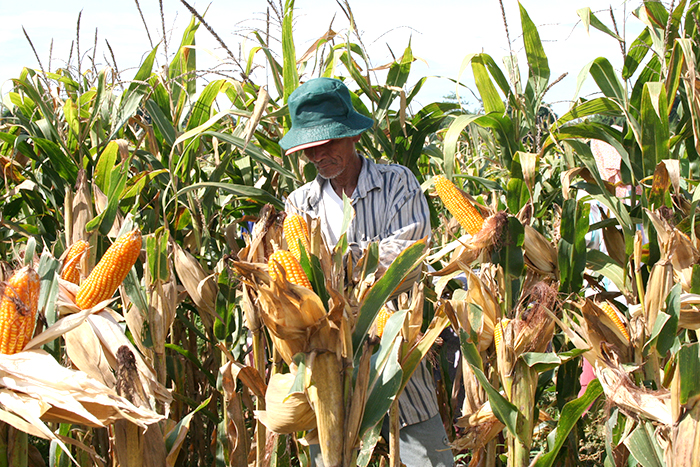
In consultation with farmers and industry stakeholders, the Department of Agriculture (DA) is crafting a strategic and robust corn industry development roadmap to address the sector’s challenges and opportunities, particularly the rising demand for feeds, food, and other industrial uses.
“The corn sector, being a major input to the poultry and swine industries, should be given more importance and long-term view to ensure its sustained contribution to the meat value chain and, in general, to the Philippine food systems,” said Agriculture Secretary William Dar.
“In particular, the roadmap should address the industry’s major challenges, like much-needed investments in mechanizing farm operations to raise productivity, and setting up of postharvest facilities to minimize wastage and reduce costs of storage and milling, including cost-efficient logistics and transport,” the DA chief said.
“Guided by the roadmap, our ‘OneDA Family’ through the national corn program will work doubly hard to increase the average yield per hectare, and attain cost-efficiencies in the corn-feed-meat value chain, making it more competitive,” he added.
Currently, the country’s national average yield of yellow corn is 4.18 metric tons (MT) per hectare (ha), but combined with white corn, the total average yield is reduced to merely 3.18 MT/ha. On the other hand, the average yield of hybrid corn is at least 8 MT/ha, said DA Corn Program Director Milo delos Reyes.
He added that the DA will focus on increasing the productivity of major corn-producing areas of the country, particularly regions 2, 10, and 12, and providing clustered farms postharvest facilities to improve the quality of stored grains and reduce wastage, and linking them directly to corn processors. All this is aimed at increasing farmers’ incomes, and enhancing their competitiveness by reducing the cost of corn as raw material for various uses.
Thus, one of the key features that will be considered in the new roadmap will be the need for the private sector like seed producers, feed millers, and commercial feed manufacturers to engage in more joint ventures or direct marketing linkages with organized corn farmers’ cooperatives and associations (FCAs), delos Reyes said.
“Indeed, the private sector can greatly help improve the productivity and incomes of corn farmers in many parts of the country through such interventions,” said secretary Dar, adding that consulting with them is undertaken through the National Banner Program Committee on Poultry, Livestock and Corn, and facilitated by the DA’s Philippine Council for Agriculture and Fisheries (PCAF).
The consultations with the private sector, corn farmers and processors, other industry stakeholders, and consumers is undertaken to craft an industry roadmap over the short-term (2021-2025), medium-term, (2025-2030), and long-term (2030-2040), said delos Reyes.
Hopefully, it will be completed and approved on or before the end of September 2021, added DA Assistant Secretary and PCAF Director Liza Battad. PCAF is the consultative arm and multi-stakeholder engagement mechanism of the “OneDA Family.”
Also present during the consultations is the corn industry roadmap development team (RDT), composed of technical experts from the academe and industry players, including Philippine Maize Federation, Inc. (PhilMaize) that represents corn farmers’ groups, Battad said.
A review of past government initiatives, including the current regulatory framework of the Philippine corn industry will be included as the basis for the revised roadmap, added delos Reyes.
Among other items under review are the needed government and private sector investments in post-harvest facilities, proposed higher DA budget to directly benefit corn farmers, and an improved value chain framework to highlight the contributions of other stakeholders that rely on corn as a major feed ingredient in the production of poultry, swine and aquaculture, and other products.
“The roadmap is therefore envisioned to be wholly owned by the industry, and responsive to the aspirations of corn farmers and industry stakeholders, who are dependent on this major commodity as source of livelihood, employment, and incomes,” Secretary Dar concluded. ### (DA StratComms)













